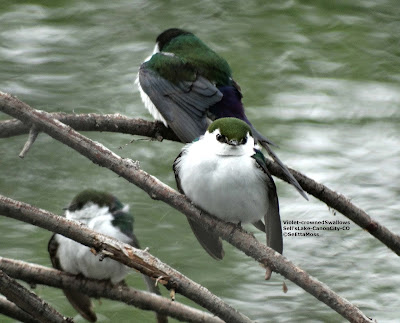Rare dark morph Broad-winged Hawk in Canon City--the same one or not??
This morning I spotted a dark morph Broad-winged Hawk that was engaged in hunting prey. I quickly learned how to stay back far enough to not flush it so I could observe it's behavior and take more photos--in fact I was able to observe it and follow it as it worked around a forested area about a quarter mile and for just over a half hour. What fun! I watched it engage in perch and pounce hunt on one occasion (it might have scored but I didn't want to get too close and risk it dropping it's prey). I was impressed by how small this hawk really is.
I learned that this is a subadult bird as it has one of the two juvenile type tails as described by Brian Wheeler in Hawks of Western North America: this one has the 'narrow banded type' tail with 4 fairly narrow dark bands plus a wider dark subterminal band (noted by Wheeler to be the same on dark morph as on light morph birds). Birds of North America online notes that female and male birds of this species begin molting to Basic I plumage so I think it's safest for me to call this bird a subadult.
Is it the same dark morph Broad-winged Hawk I photographed day before yesterday? Certainly the odds are strongly against having 2 dark morph Broad-winged Hawks in Canon City just 2 days apart--according to Cornell's All About Birds webpage, "It is found primarily in the northwestern part of the range, and accounts for less than 0.1% of migrants observed." All my field guides and online resources said a dark morph of this species is a rare or very form so I expected this to be the same bird.
However--see how the tail of today's dark morph shows multiple narrow dark bands alternating with narrowish pale bands with the subterminal band just a little wider than the other dark bands. This appears different from the tail bands on the bird from day before yesterday (show below) which appear to me to be consistent with adult tail bands described in Raptors of Western North America: "TAIL (ventral)-Black with one broad white band that is always visible on the mid-section. When fanned, an additional one or two narrow white inner bands may also show." SeEtta







Comments